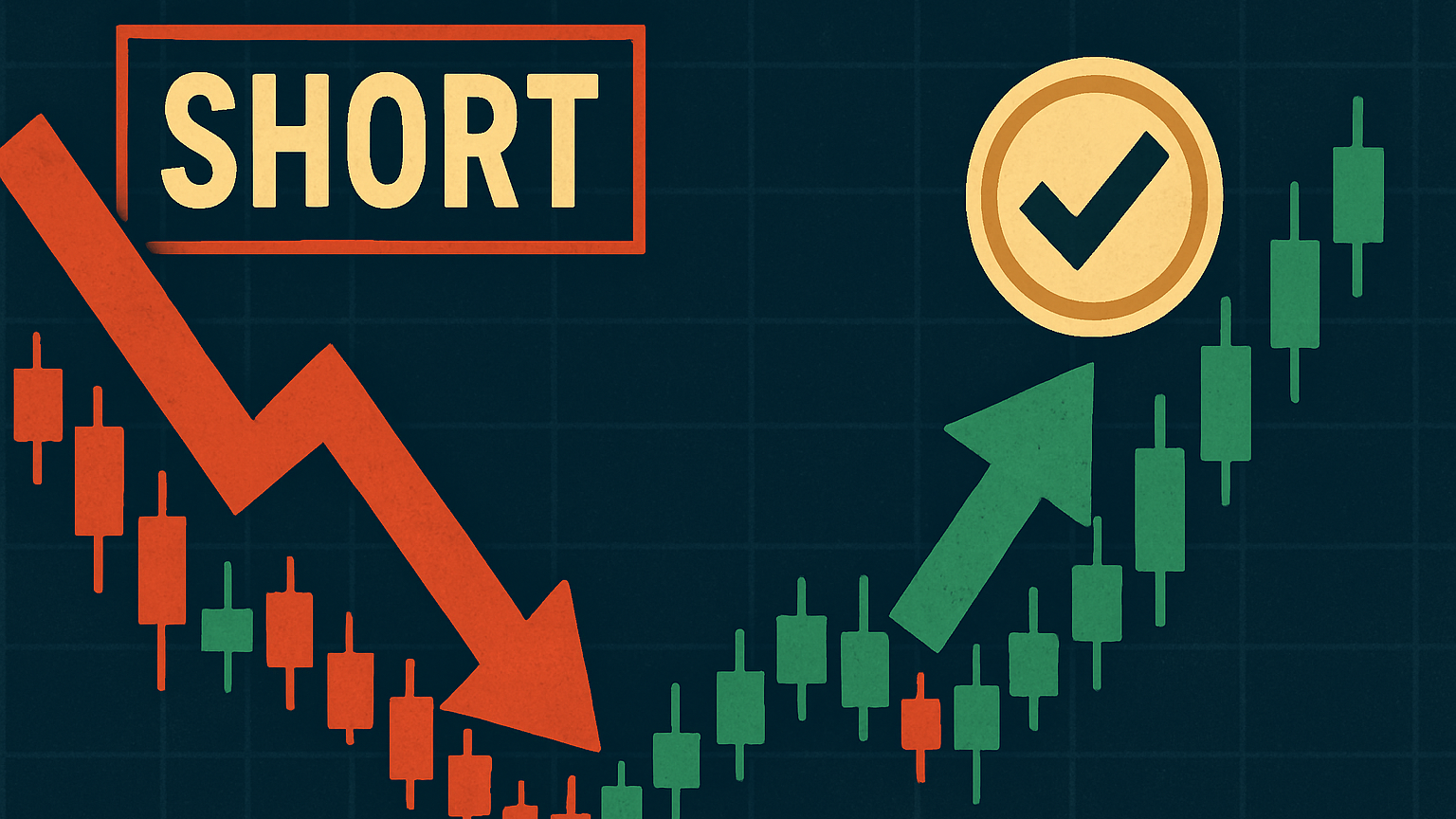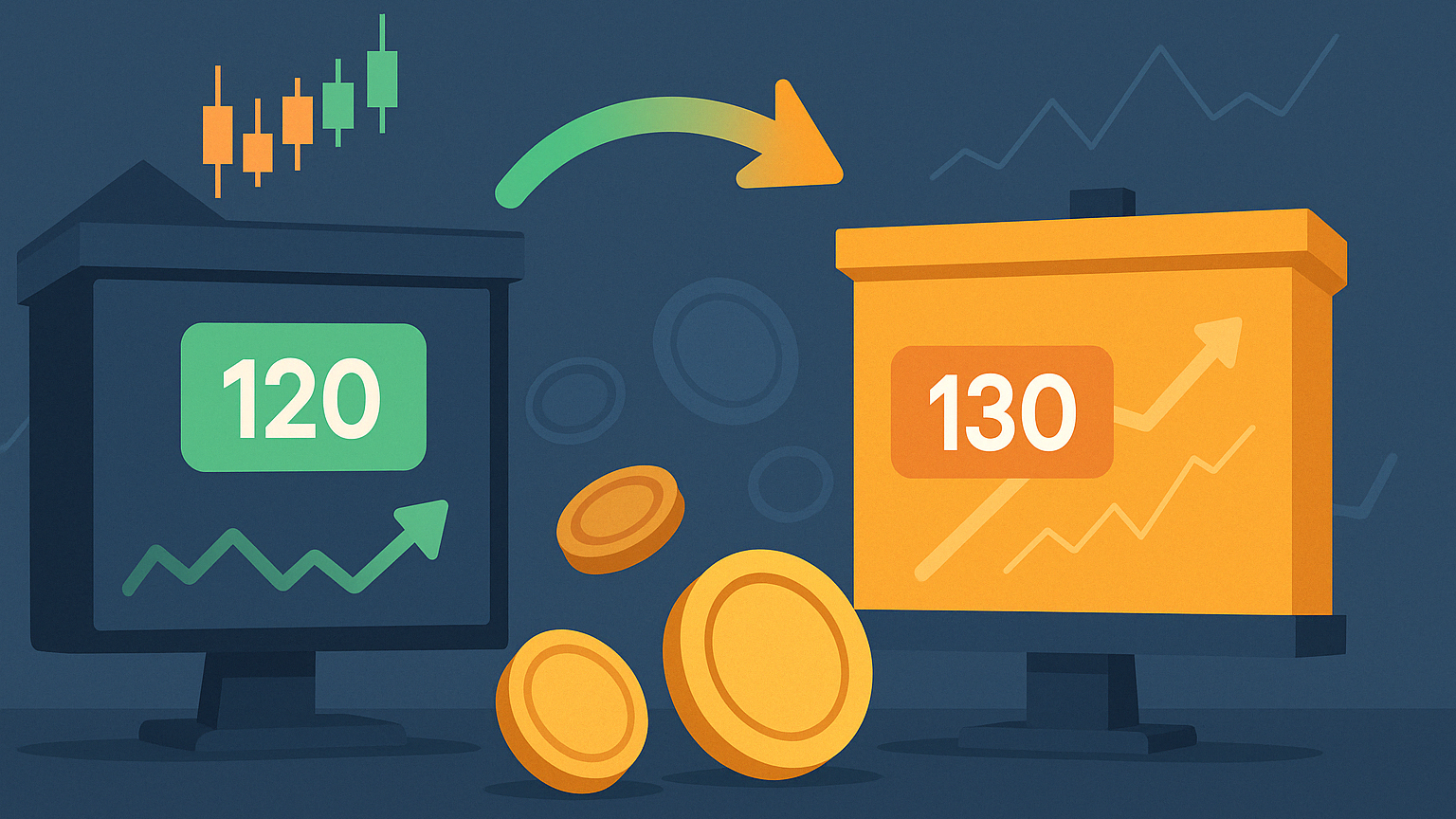Learn how volume-based support and resistance levels enhance trading strategies by incorporating market activity for better decision-making.
Volume-based support and resistance levels go beyond traditional price-focused methods by incorporating trading activity to identify key market zones. Here's why they matter:
- Support: Where buying pressure halts price drops.
- Resistance: Where selling pressure limits price increases.
- Volume's Role: High trading activity at specific price levels strengthens these zones, improving accuracy and reducing false signals.
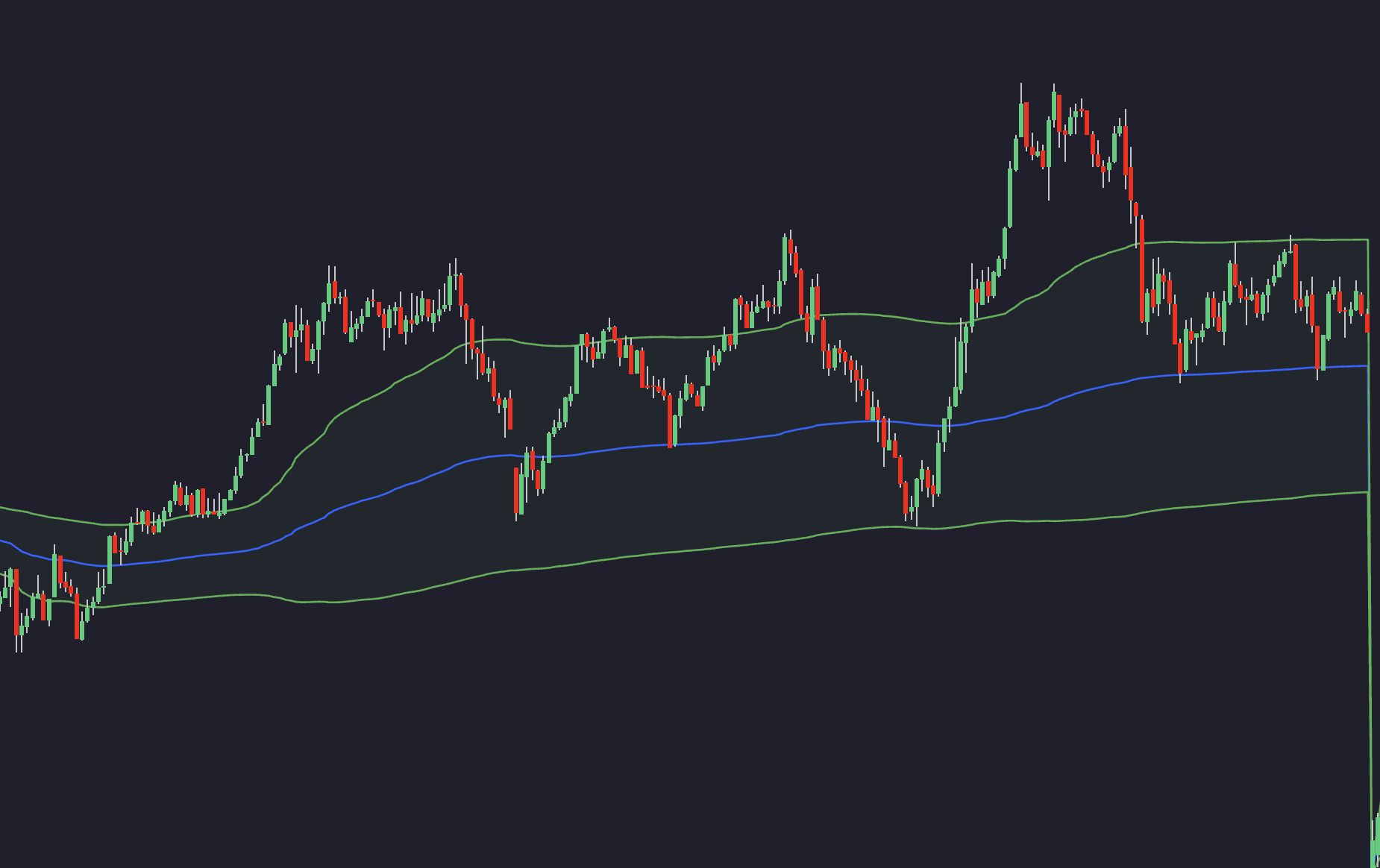
Key Takeaways:
- Volume Confirmation: Breakouts with high volume are more reliable.
- Volume Tools: Indicators like VWAP, Volume Profile, and OBV help pinpoint strong levels.
- Trading Styles: Tailor volume analysis to your timeframe – scalping, day trading, or swing trading.
- Practical Use: LuxAlgo offers hundreds of free trading indicators, exclusive tools, and an AI Backtesting platform that simplify volume-based strategies for traders.
Volume-based analysis enhances decision-making by revealing where market participants are most active, leading to better timing and higher success rates. Let’s dive deeper into how this works.
Volume Trading: Setting Volume-Based Support and Resistance Levels
How Volume-Based Levels Work
Volume-based levels act as natural support and resistance zones, often providing insights that go beyond traditional price-focused analysis.
Volume Nodes and Price Shelves
Volume nodes are areas where trading activity is heavily concentrated, creating important price levels. These nodes can evolve into price shelves (sometimes called volume shelves) when significant trading occurs in a particular range, signaling a balance between buyers and sellers.
| Volume Level Type | Characteristics | Importance |
|---|---|---|
| High Volume Node | Dense trading activity | Acts as strong support or resistance |
| Volume Shelf | Broad range of price activity | Reflects market equilibrium |
| Volume Gap | Sparse trading activity | Indicates areas of rapid price movement |
For example, when a price enters a volume gap, it often moves quickly until it reaches a new volume shelf. Imagine a stock with minimal trading between $45 and $47 – prices typically move swiftly through this range before pausing at the next significant volume level.
These patterns play a key role in shaping the strategies outlined in the upcoming Volume Indicators Guide.
Volume Confirmation in Price Breaks
Volume plays a critical role in confirming price breakouts. Research shows that integrating volume analysis can improve strategy performance by 18% compared to relying on price action alone [1]. This is especially useful for scalpers who need quick, reliable signals.
Key indicators of volume confirmation include:
- Trading volume at least twice the daily average
- Sustained price movement beyond the breakout level
- A clear break of a major volume node
Breakouts on low volume often lack conviction and can lead to false signals, while high-volume breakouts suggest stronger market momentum.
Timeframe Selection for Trading
Different trading styles require tailored timeframe analysis. The Point of Control (POC) – the price level with the highest traded volume – serves as a crucial benchmark across all timeframes.
| Trading Style | Suggested Timeframes | Focus for Volume Analysis |
|---|---|---|
| Scalping | 1-15 minute charts | Intraday volume nodes for fast setups |
| Day Trading | 15-60 minute charts | Daily POC levels for precision |
| Swing Trading | 4H-Daily charts | Weekly volume shelves for broader trends |
Later in the article, these strategies will be applied to real-world trading scenarios to show how they work in action.
Volume Indicators Guide
Volume-based indicators help traders identify support and resistance levels by analyzing price action and market sentiment.
VWAP Trading Guide

The Volume Weighted Average Price (VWAP) is a popular benchmark among institutional traders, serving as a dynamic indicator for support and resistance.
Here’s how VWAP can be used:
-
Reversal Zones:
- Support: When the price bounces off VWAP from below, it signals upward momentum.
- Resistance: When the price rejects VWAP from above, it indicates selling pressure.
-
Trend Confirmation:
- If the price stays above VWAP, it suggests bullish momentum.
- If the price remains below VWAP, it points to bearish control.
These strategies align well with timeframe-specific approaches mentioned earlier.
Volume Profile Analysis
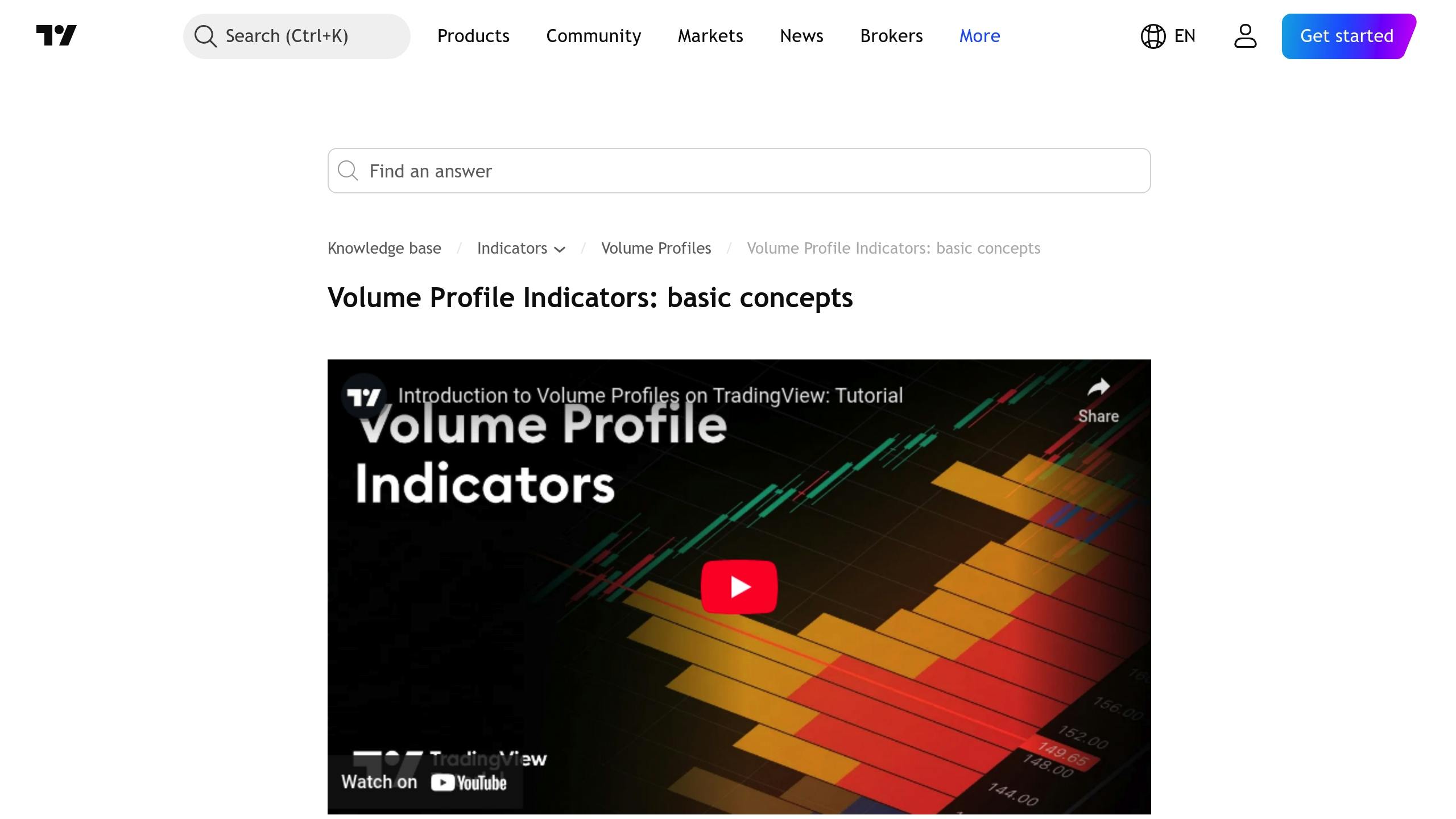
The Volume Profile uses a horizontal histogram to display areas of significant trading activity. The Value Area High and Low mark the boundaries of the range containing 70% of the volume [5].
| Volume Profile Component | Trading Significance | Application |
|---|---|---|
| Value Area High/Low | Marks 70% of volume activity | Defines ranges |
By leveraging LuxAlgo's Volume Analysis Toolkit – part of its extensive library of free trading indicators – traders can combine Volume Profile with pattern recognition techniques to pinpoint support and resistance zones more effectively.
OBV Trading Strategies

The On-Balance Volume (OBV) indicator measures buying and selling pressure by cumulatively summing volume on up days and subtracting it on down days [2].
Here are two effective OBV strategies:
-
Divergence Trading:
- Bullish: If the price forms lower lows but OBV forms higher lows, it suggests a potential reversal upward.
- Bearish: If the price forms higher highs but OBV forms lower highs, it signals a possible reversal downward.
-
Breakout Confirmation:
When the price breaks through a key level, OBV should show increased volume in the direction of the breakout. This confirmation is especially useful for scalpers.
"OBV divergence from price movement can predict potential reversals with remarkable accuracy when combined with key support and resistance levels" [2].
Incorporating volume indicators like VWAP, Volume Profile, and OBV with price action strategies provides a clearer view of market structure and potential turning points.
Tools for Volume Analysis
Analyzing support and resistance levels based on volume requires solutions that turn raw market data into actionable insights. These resources help traders understand market participation and make informed decisions.
AI Testing Tools
LuxAlgo’s AI Backtesting Assistant – LuxAlgo’s AI platform for automatically creating trading strategies – leverages machine learning to enhance volume analysis. It offers traders a way to refine their strategies with features like:
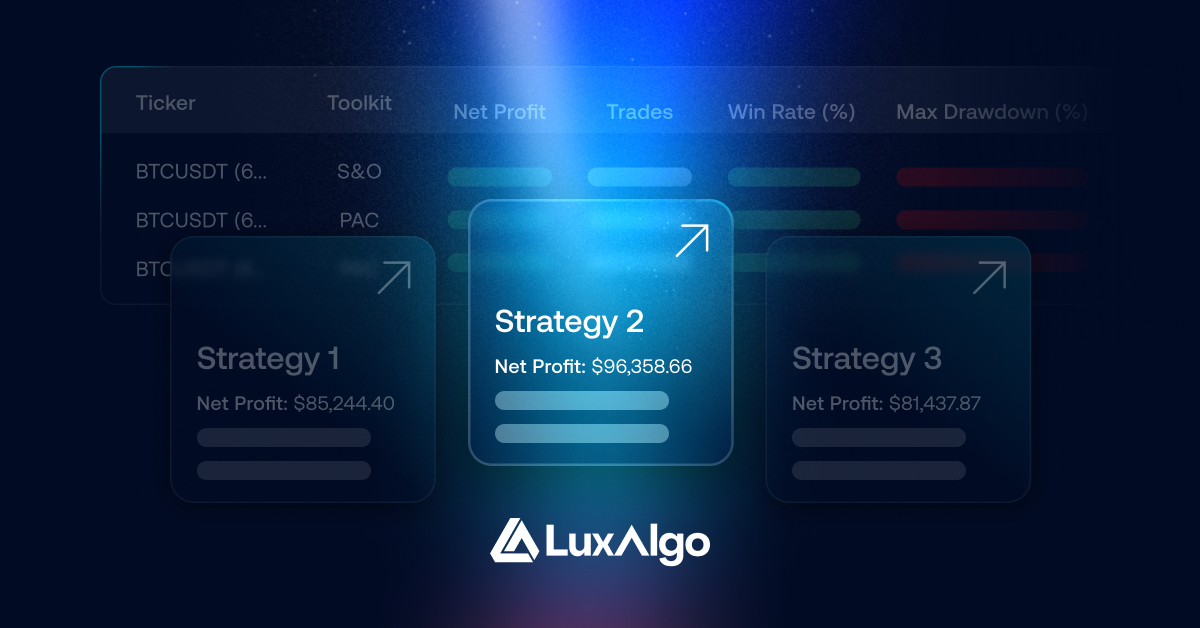
- Algorithms that identify patterns in historical volume data across different timeframes
- Adjustable settings to customize volume indicators
- Detailed performance metrics paired with visual aids
- Machine learning to uncover hidden volume trends
This platform allows traders to test and validate their volume-based strategies before applying them in real-world scenarios.
Alert Systems Setup
Volume alerts play a key role in spotting trading opportunities as they arise. Here are some common types of volume-based alerts and how they work:
| Alert Type | Purpose | Implementation |
|---|---|---|
| Volume Spike | Spot sudden surges in trading activity | Set custom thresholds based on average volume |
| VWAP Crossover | Highlight support/resistance breaks | Triggered when price crosses VWAP with volume confirmation |
| Volume Profile | Track high-volume price levels | Automated alerts for trading at key levels |
Learning Resources
Understanding volume-based support and resistance levels takes time and education. LuxAlgo offers various resources to help traders, such as:
- Video case studies to demonstrate real-world applications
- Live webinars focused on strategy development
- Updated guides on pattern recognition techniques
These resources are designed to teach traders how to effectively use volume analysis to identify high-probability support and resistance zones, particularly for scalping strategies.
Trading Examples
Let's break down how volume-based support and resistance strategies are applied in different markets.
Crypto VWAP Scalping
Crypto scalpers often use VWAP (Volume Weighted Average Price) to guide their trades. Here's a step-by-step example:
- Pick liquid trading pairs like BTC/USDT to ensure smooth execution.
- Set VWAP with standard deviation bands (e.g., 2 SD) to identify potential trade zones.
- Enter trades when prices hit the deviation bands, aiming for a return to the VWAP line (mean reversion).
In backtests, this method showed a 68% success rate [1].
Stock Gap Trading
Volume profile analysis is particularly useful for trading stocks with price gaps. These gaps often align with high-volume areas, offering clues for reversals. Key tactics include:
- Spotting high-volume nodes near the gap as likely reversal zones.
- Analyzing pre-market trading activity to understand sentiment.
- Using these volume clusters to decide on entry points and stop-loss levels.
Forex Volume Analysis
In Forex, order flow analysis adds depth to traditional volume profiling by highlighting imbalances in buying and selling activity. Here's how traders use it:
- Watch for order flow divergences at critical price levels.
- Focus on areas with notable buying or selling imbalances.
- Combine insights from multiple timeframes for a clearer picture.
Platforms such as LuxAlgo offer features that enhance this process by automating divergence detection, making it easier to spot patterns. Traders using order flow analysis at liquidity clusters reported a 23% improvement in win rates [4].
Summary
Benefits of Volume Analysis
Analyzing support and resistance levels based on volume offers traders a clearer view of market dynamics by highlighting areas with substantial trading activity. Unlike relying solely on price movements, this method uncovers where significant participation has occurred, helping traders confirm breakouts and manage risks more effectively. Interestingly, 70-80% of major price moves align with institutional activity visible through volume data [6]. For scalpers, using volume-confirmed levels has shown to improve timing by 15-20% [3]. These benefits are especially evident in both crypto and stock trading scenarios.
The Role of Trading Tools
Platforms like LuxAlgo have brought advanced analysis features to everyday traders by offering hundreds of free trading indicators, exclusive tools, and an AI Backtesting platform. Real-time divergence alerts and other functionalities help traders execute fast-paced scalp strategies with improved precision.
FAQs
How do you use the Volume Profile for support and resistance?
The Volume Profile helps pinpoint crucial price levels where trading activity is concentrated. Areas with High Volume Nodes (HVNs) often serve as strong support or resistance, while Low Volume Nodes (LVNs) signal zones where prices may move swiftly. These patterns align well with the strategies outlined earlier, especially when tailored to specific timeframes.
Practical tip: Look for Point of Control (POC) levels created by volume clustering. Consider entering positions near HVNs and placing stop-loss orders just beyond LVNs.
How does the volume-by-price indicator work?
The volume-by-price indicator displays a horizontal histogram showing trading volume at different price levels. For scalpers, this tool can be invaluable for identifying key market dynamics:
| Component | What It Reveals |
|---|---|
| Price Zones | Defines support and resistance levels |
| Volume Bars | Confirms the strength of these zones |
| Color Coding | Highlights market bias or sentiment |
To maximize its usefulness, pair this indicator with the AI-driven resources discussed earlier in the article.




